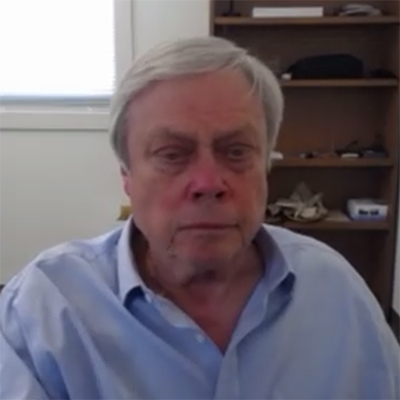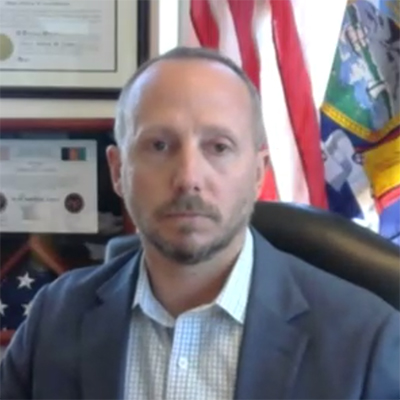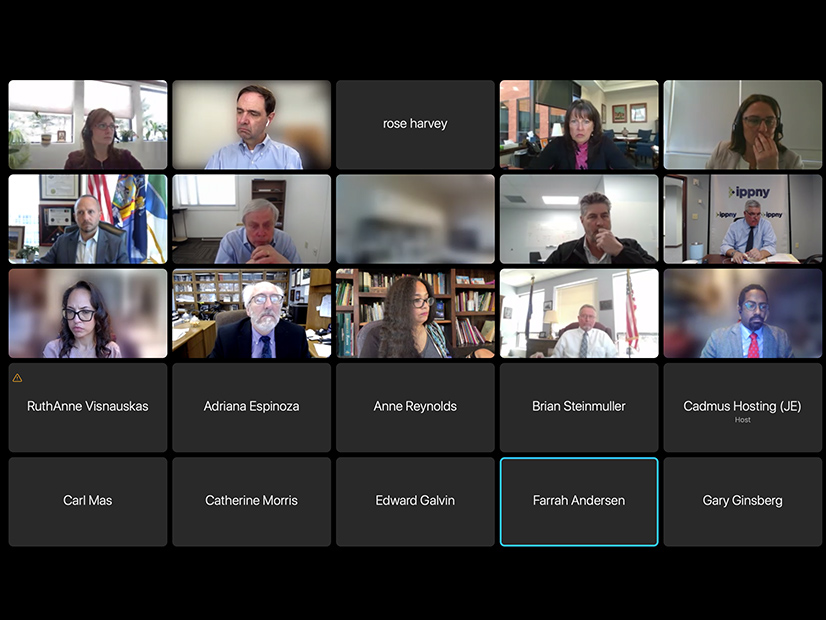New York officials on Thursday outlined a schedule to complete a final scoping plan by year-end to reduce economywide greenhouse gas emissions 40% by 2030 and no less than 85% by midcentury from 1990 levels.
 NYCAC Director Sarah Osgood | NYDPS
NYCAC Director Sarah Osgood | NYDPSThe Climate Action Council (CAC) in December approved a draft scoping plan that sets the approximate steps needed to achieve the emission limits set by the Climate Leadership and Community Protection Act (CLCPA).
Based on the discussion that occurred on the draft scoping plan, CAC staff pulled out a few topics on which council members do not concur and additional deliberation is needed, said CAC Director Sarah Osgood.
The council will hold nine, three-hour public comment hearings throughout the state between April 5 and May 11, two of them virtual and the remainder in person, with a mid-June deadline for submitting written comments.
Undefined Terms
Of the terms the council will deliberate, the state’s approach to transitioning the gas system is “of great interest to many of the council members,” Osgood said. “It sounds like we need to determine what New York’s approach to decarbonizing the gas system should look like.”
If council members do not reach “100% agreement” on the topic, Osgood said there is “still plenty of room for additional progress.”
In approving the minutes of the December meeting, Donna L. DeCarolis, president of the National Fuel Gas, said she wanted to repeat her opposition to the council’s adoption of the term “fossil gas” in place of natural gas, noting that the term is not defined by the Public Service Commission or under state law.
Gavin Donohue, president and CEO of the Independent Power Producers of New York, agreed with DeCarolis and asked that their “no” votes be identified by name in the minutes, along with that of Dennis Elsenbeck, president of lithium-ion storage developer Viridi Parente.
 Bob Howarth, Cornell University | NYDPS
Bob Howarth, Cornell University | NYDPSThe CAC voted to apply vote breakdowns consistently throughout the minutes.
The council also will deliberate the potential applications of advanced fuels, including potential regulatory mechanisms, limits or conditions for their use, and the role of research, development and demonstration in these areas, Osgood said.
“Finally, we see room for further progress on carbon pricing policies, potential regulatory mechanisms around funding, the role of private funds and private financing, and how to align markets to help facilitate the needed resources,” Osgood said.
Beyond the cost benefit analysis, issues of how the state will pay for initiatives seem to be absent from the discussion and need to be included, said Bob Howarth, professor of ecology and environmental biology at Cornell University.
Urgency and Equity
The Intergovernmental Panel on Climate Change (IPCC) 6th assessment report issued on Feb. 28 is focused on impacts, adaptation and vulnerability. Much like prior IPCC reports, there are calls to action and updated forecasts for the causes and effects of climate change, said Doreen Harris, President and CEO of the New York State Energy Research and Development Authority (NYSERDA).
 NYSERDA CEO Doreen Harris | NYDPS
NYSERDA CEO Doreen Harris | NYDPS“This report also paints a stark picture for humanity, warning that climate change risks are greater than thought,” Harris said. “In fact, the final two sentences of this new report really say it all, and I quote, ‘the scientific evidence is unequivocal: climate change is a threat to human well-being and the health of the planet. Any further delay in concerted global action will miss a brief and rapidly closing window to secure a livable future.’”
This week, the state Department of Environmental Conservation will put out the disadvantaged community criteria and maps, said Commissioner Basil Seggos, who also introduced the DEC’s first deputy commissioner for equity and justice, Adriana Espinoza.
The CAC this year will include advancing the integration of equity throughout the scoping plan and ensuring that it’s central to the council’s decision-making processes, Seggos said.
 DEC Commissioner Basil Seggos | NYDPS
DEC Commissioner Basil Seggos | NYDPSAs the council approaches the topics set aside for further deliberation, a couple of questions to consider are how equity and justice will be considered and weighted, and what role the Climate Justice Working Group (CJWG) should have in shaping that approach as partners in this work, Espinoza said.
“The group’s meaningful involvement, combined with a robust public input process that we were just discussing will help ensure that the [CLCPA] is informed by priorities of disadvantaged communities, and as concerns from the [CJWG] are representative of concerns expressed by frontline communities, so these concerns must be considered when we deliberate,” Espinoza said.
She reminded the council that the working group “previously shared a lot of really poignant and helpful comments and resources about integrating equity into the council’s work” and that “we can consider reviewing these resources and others during future discussions to ensure that our shared commitment to equity and justice is clear in the final scoping plan.”

